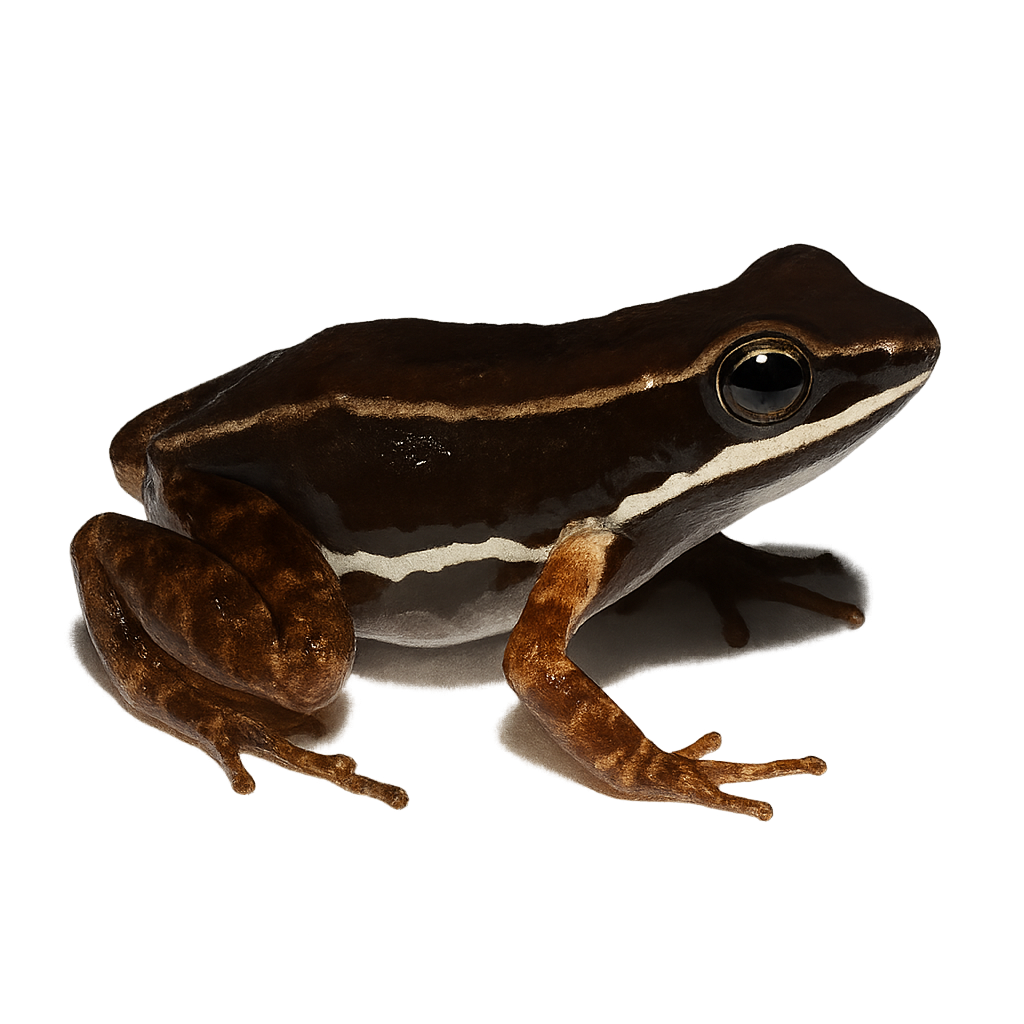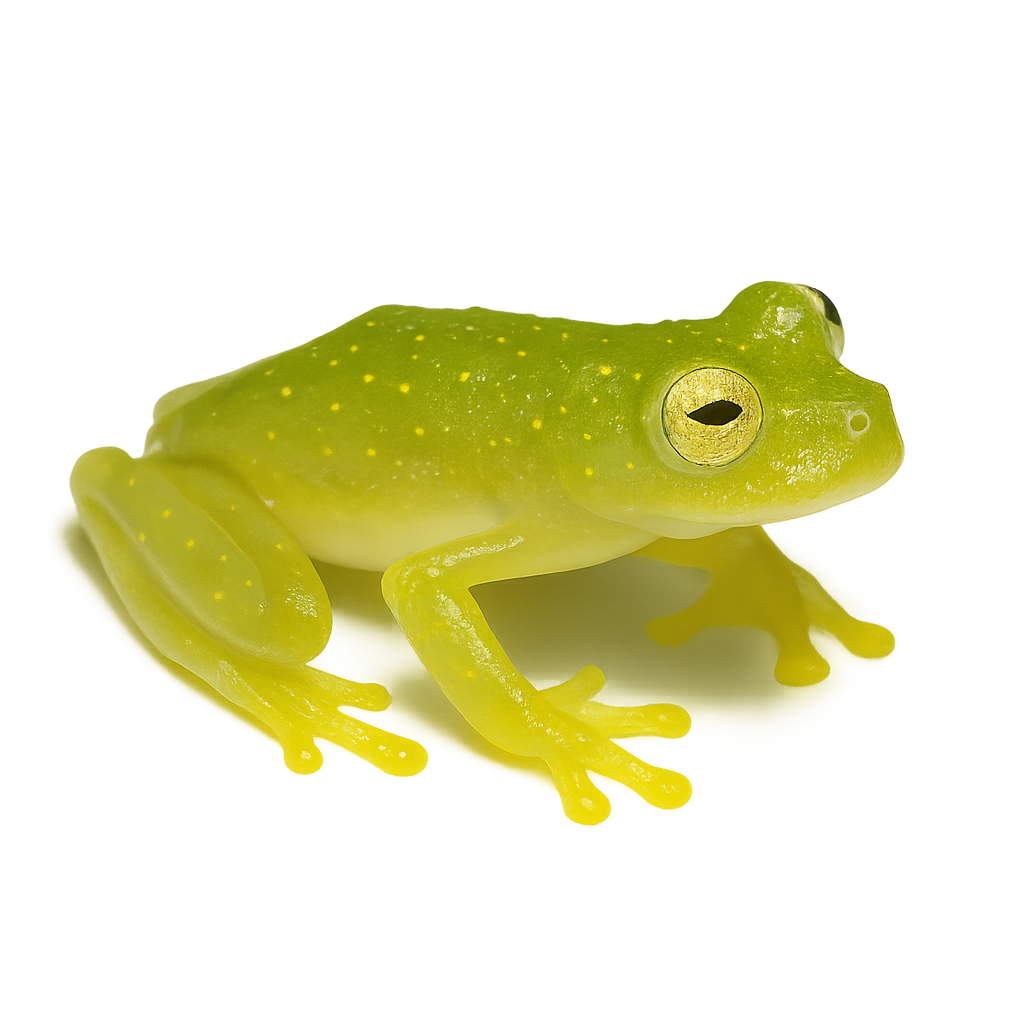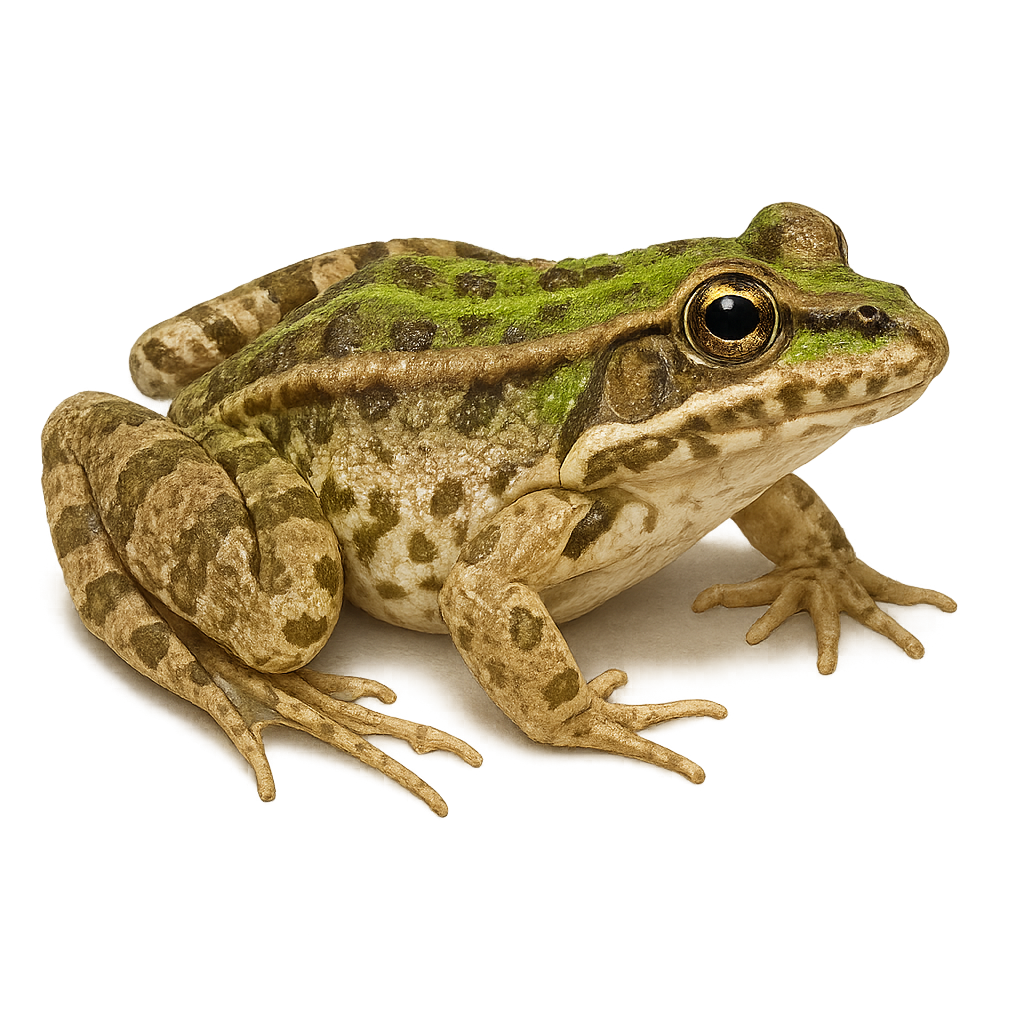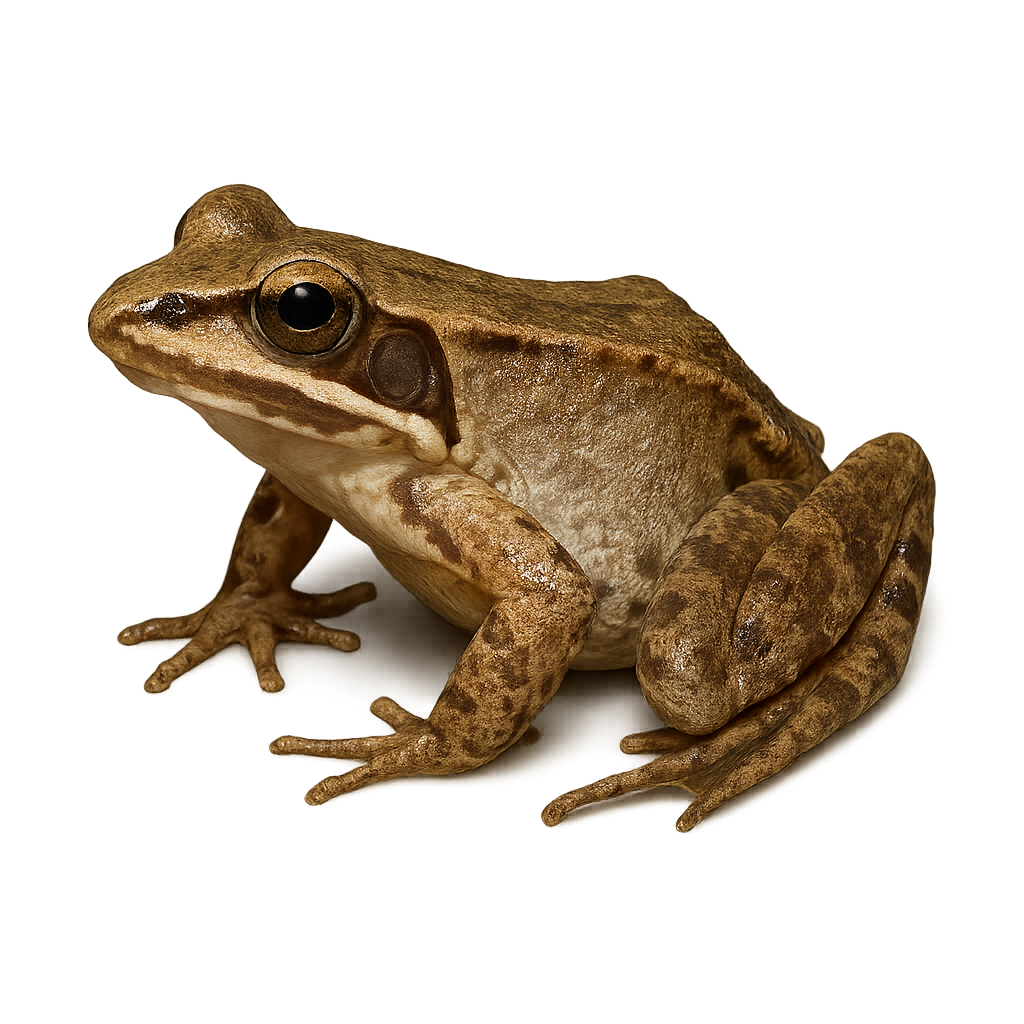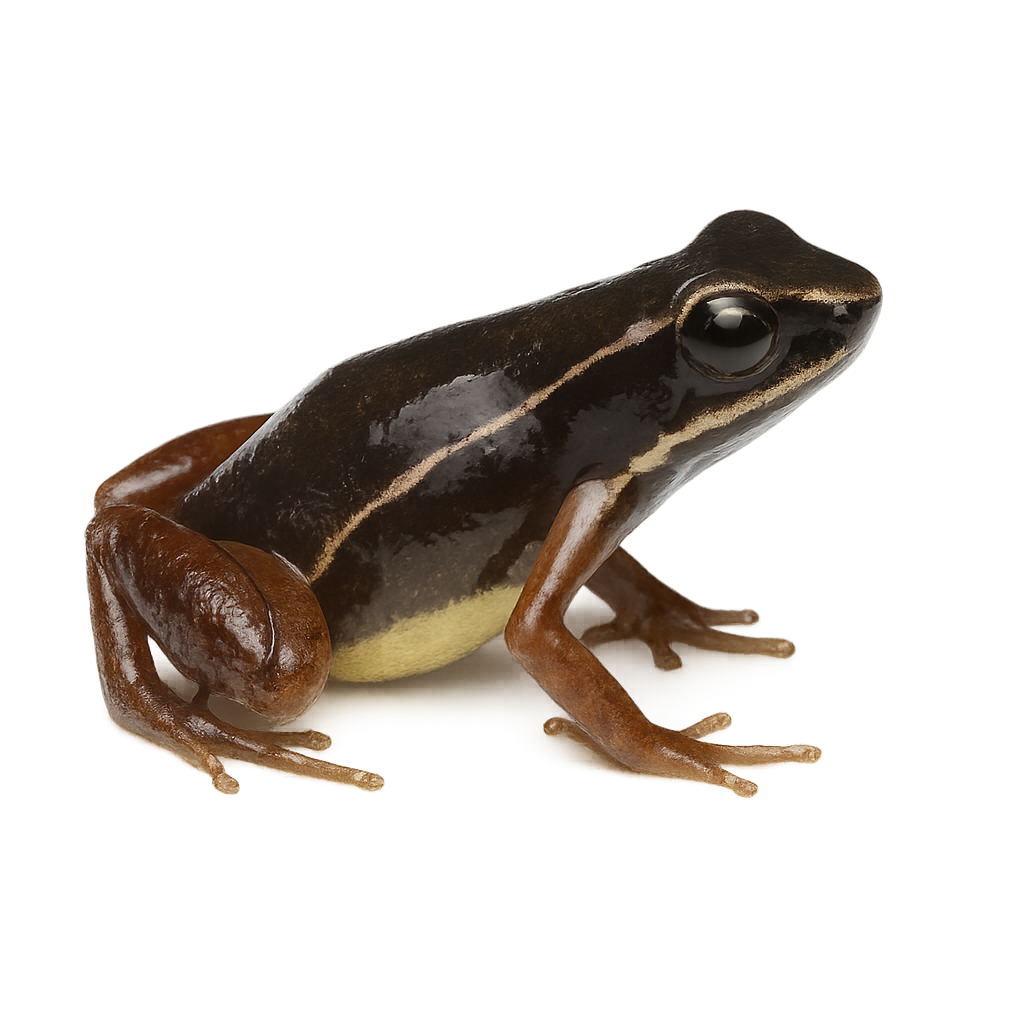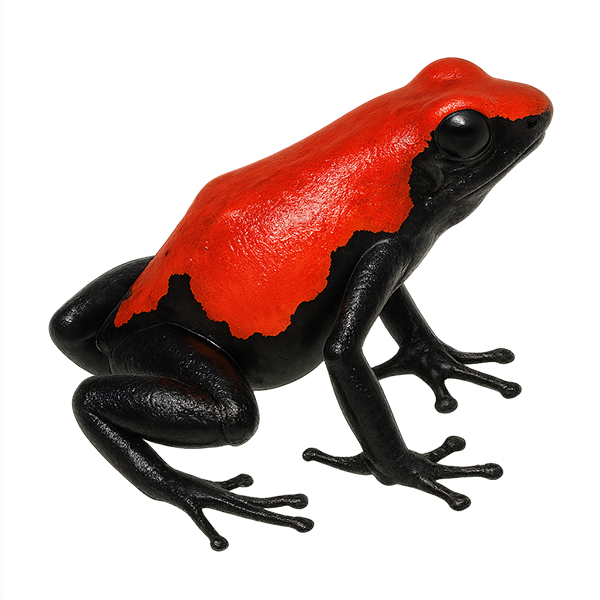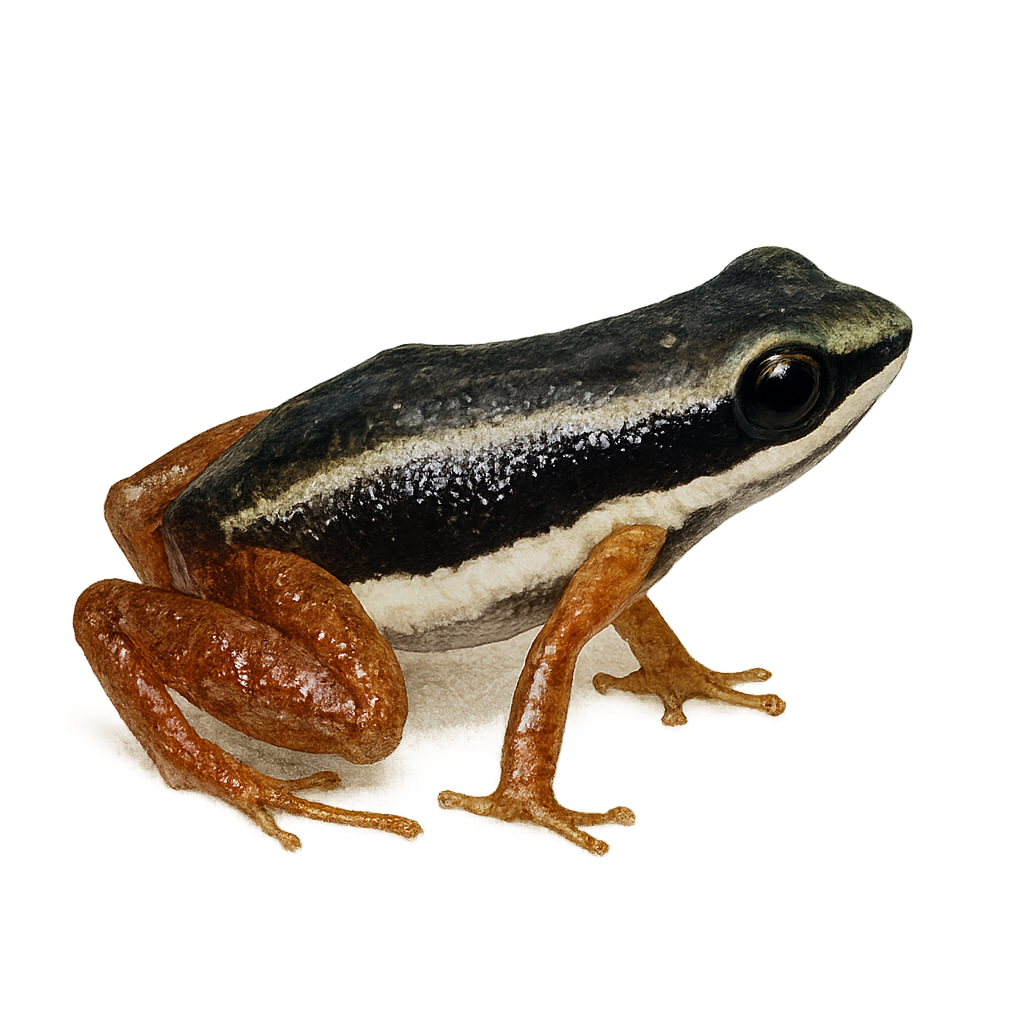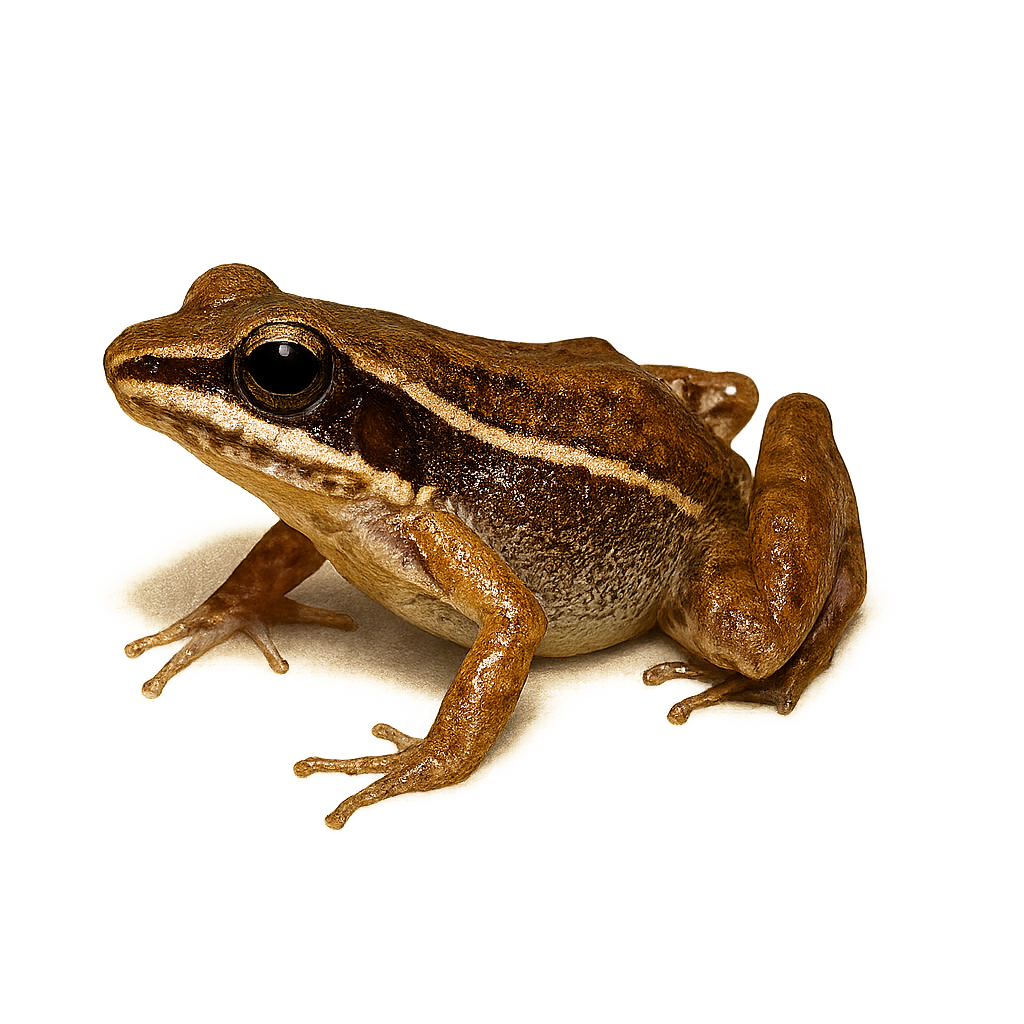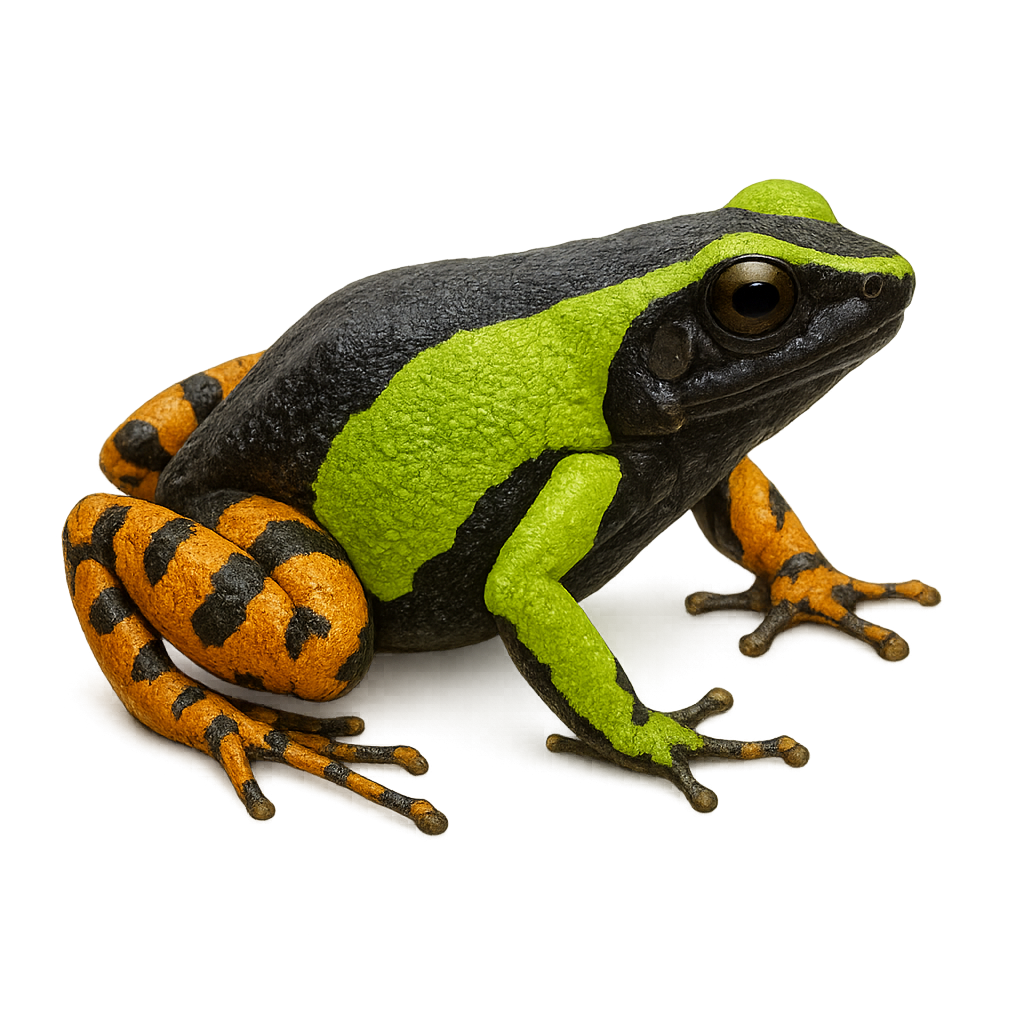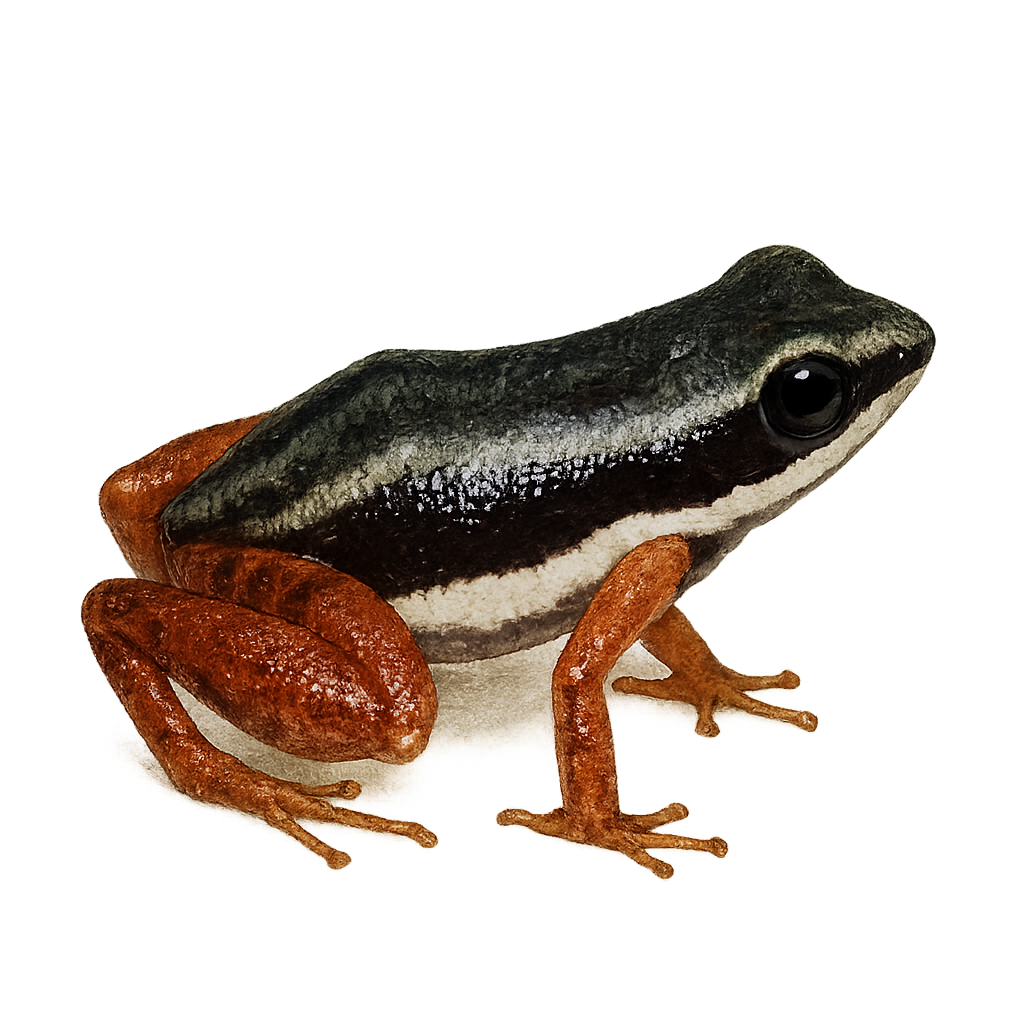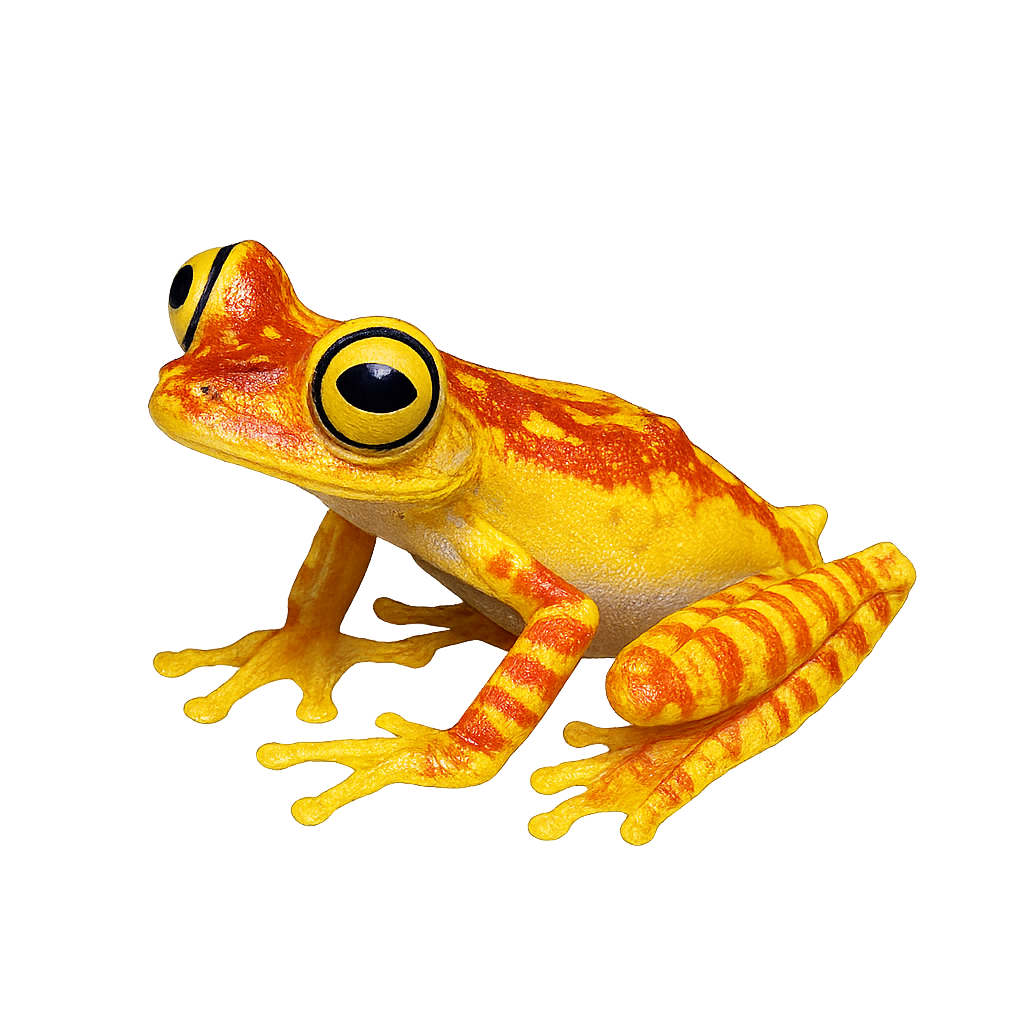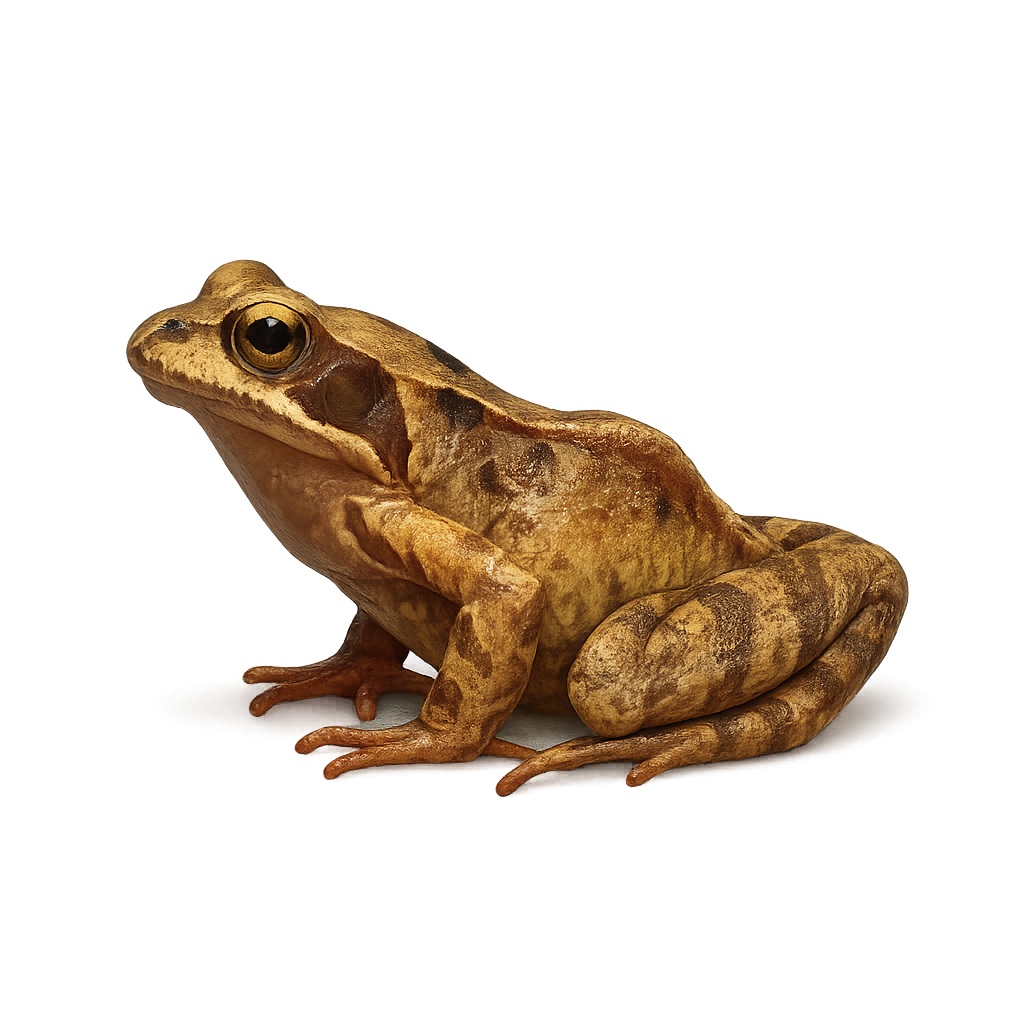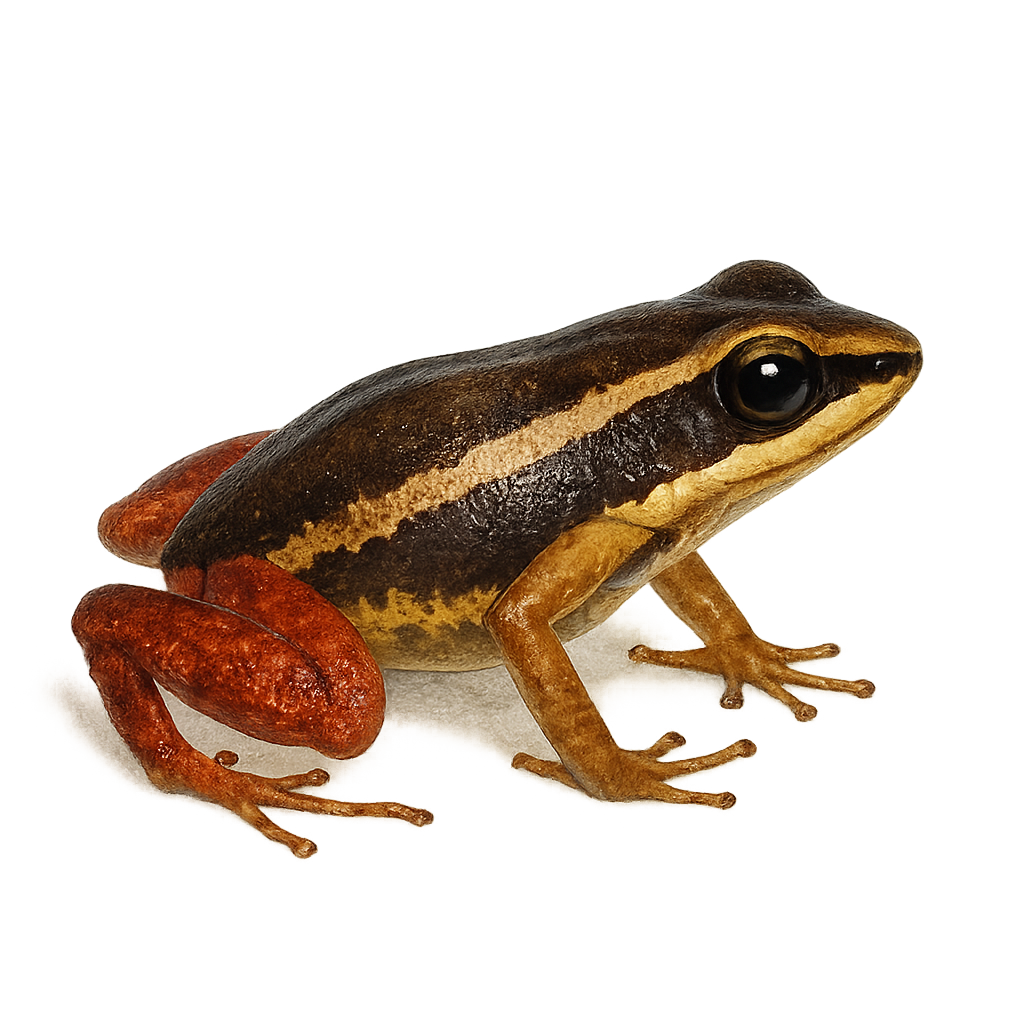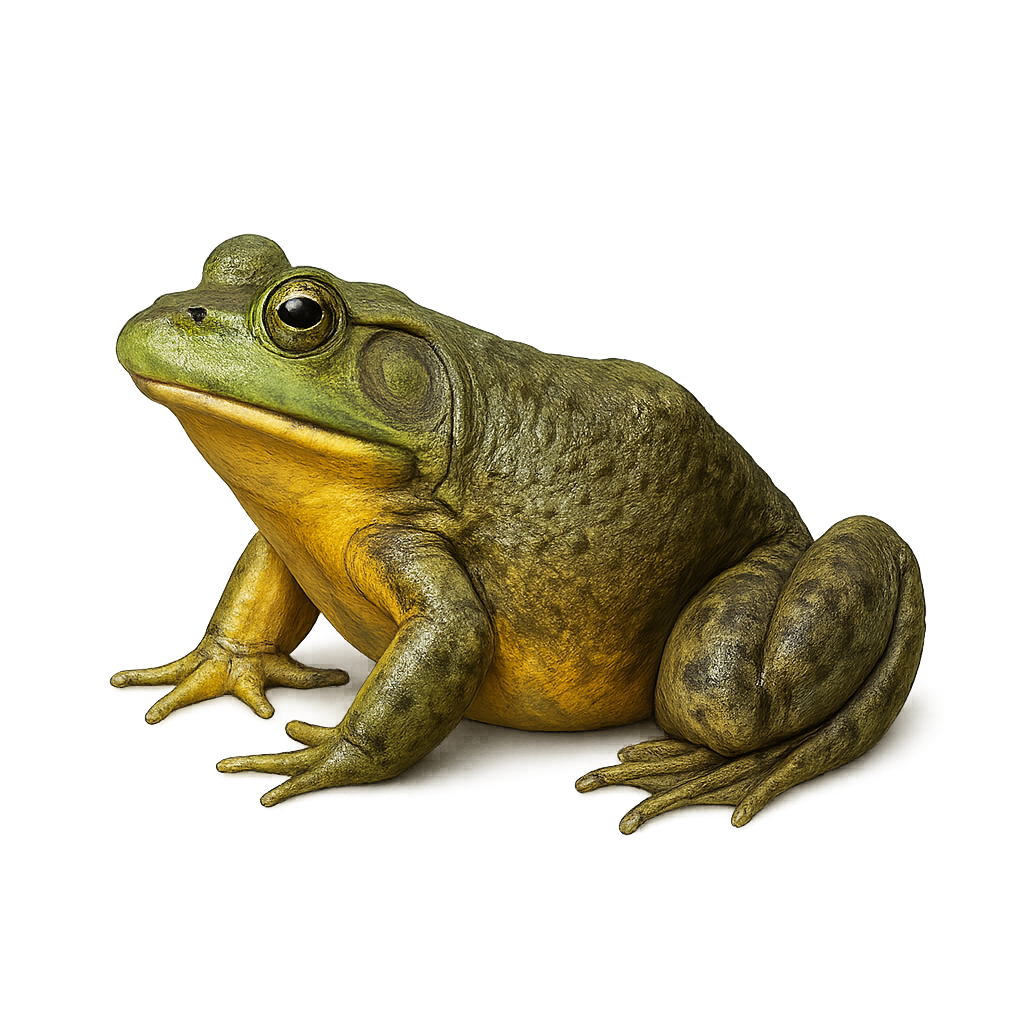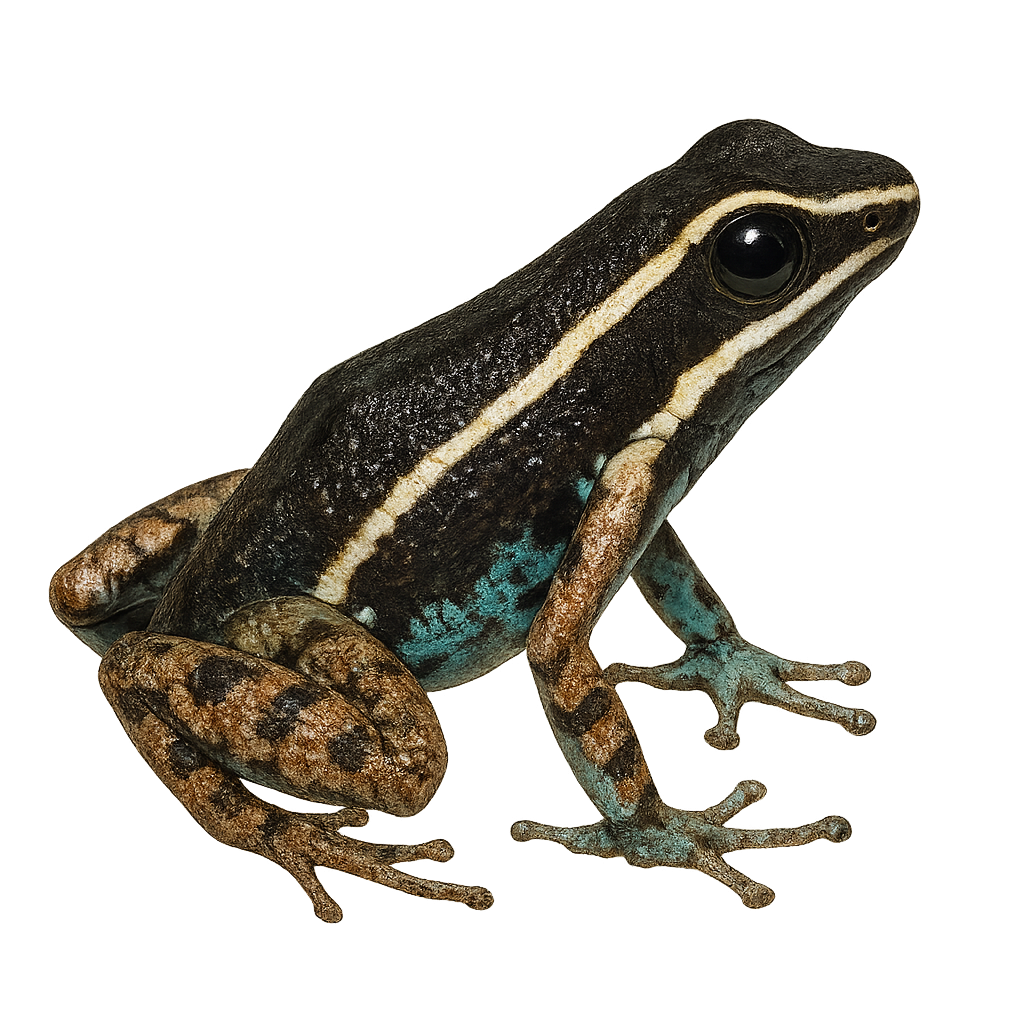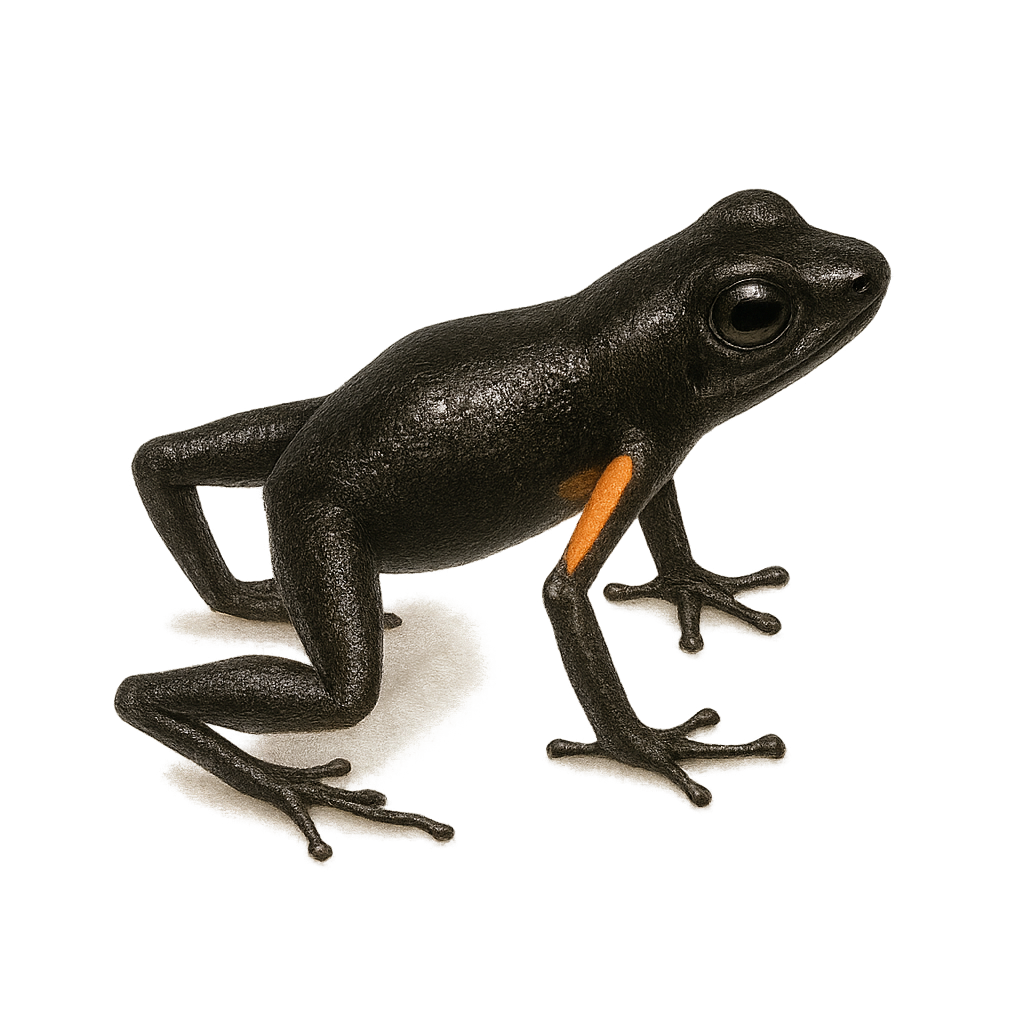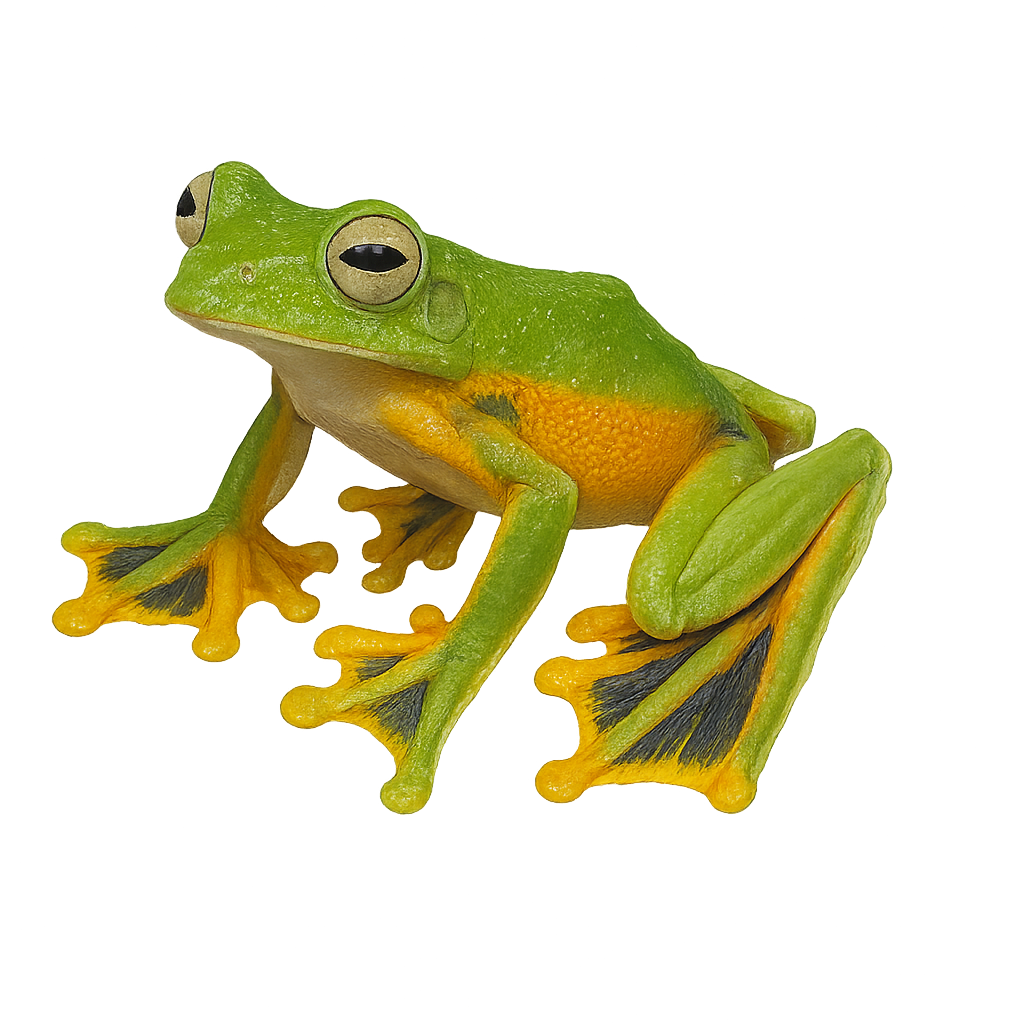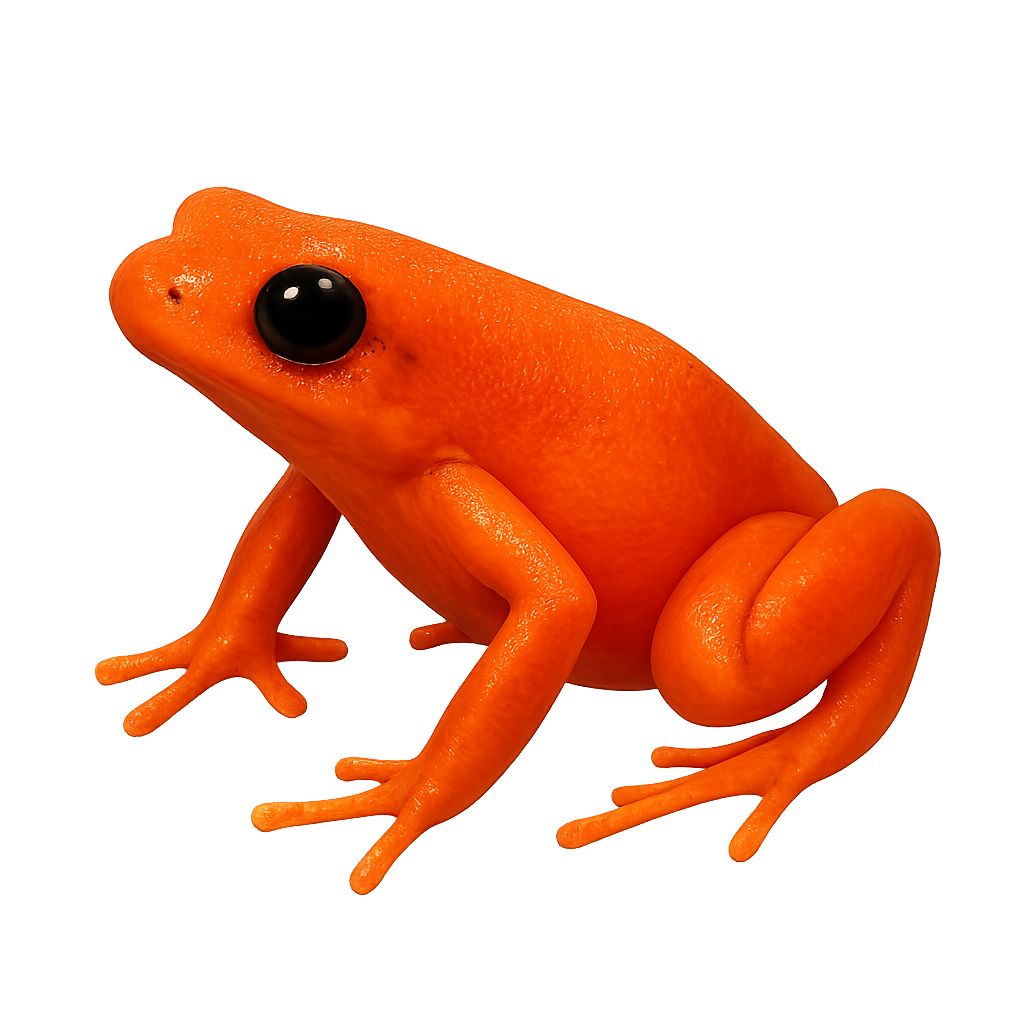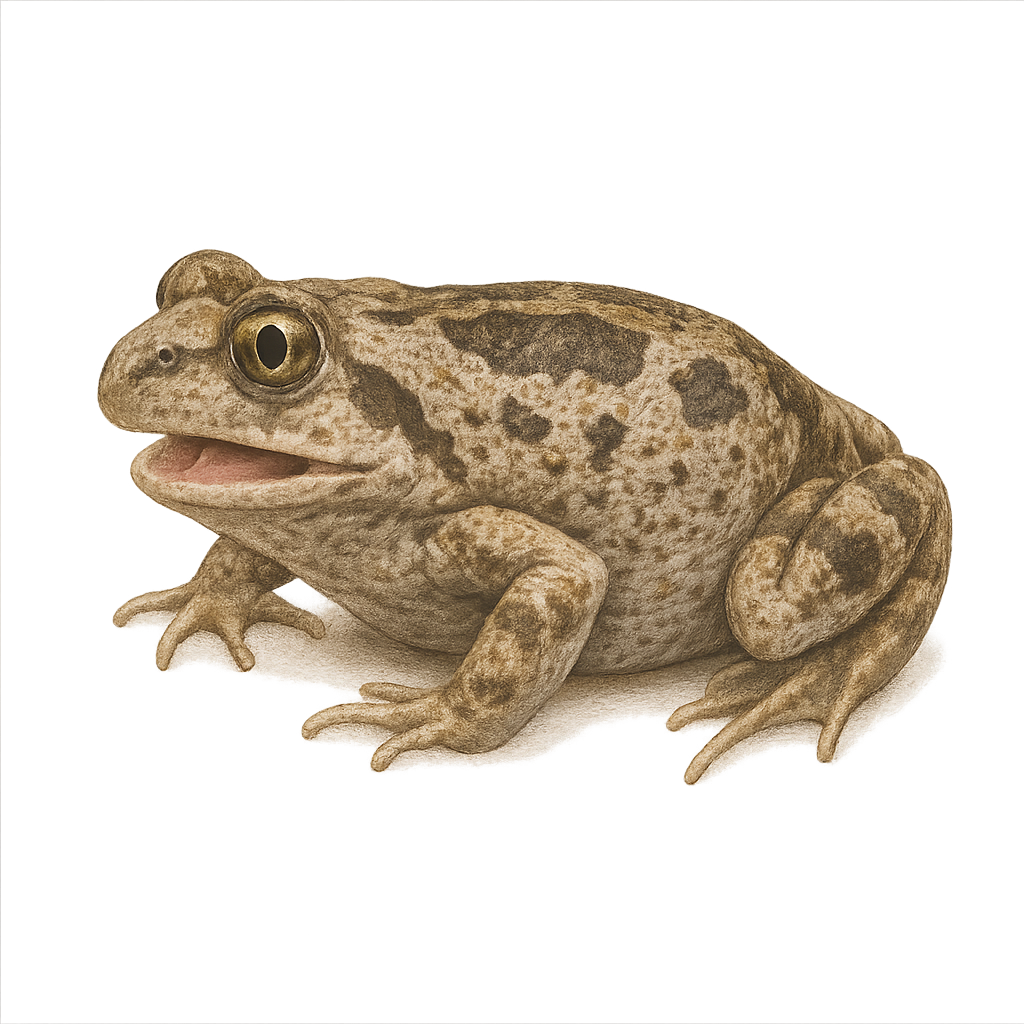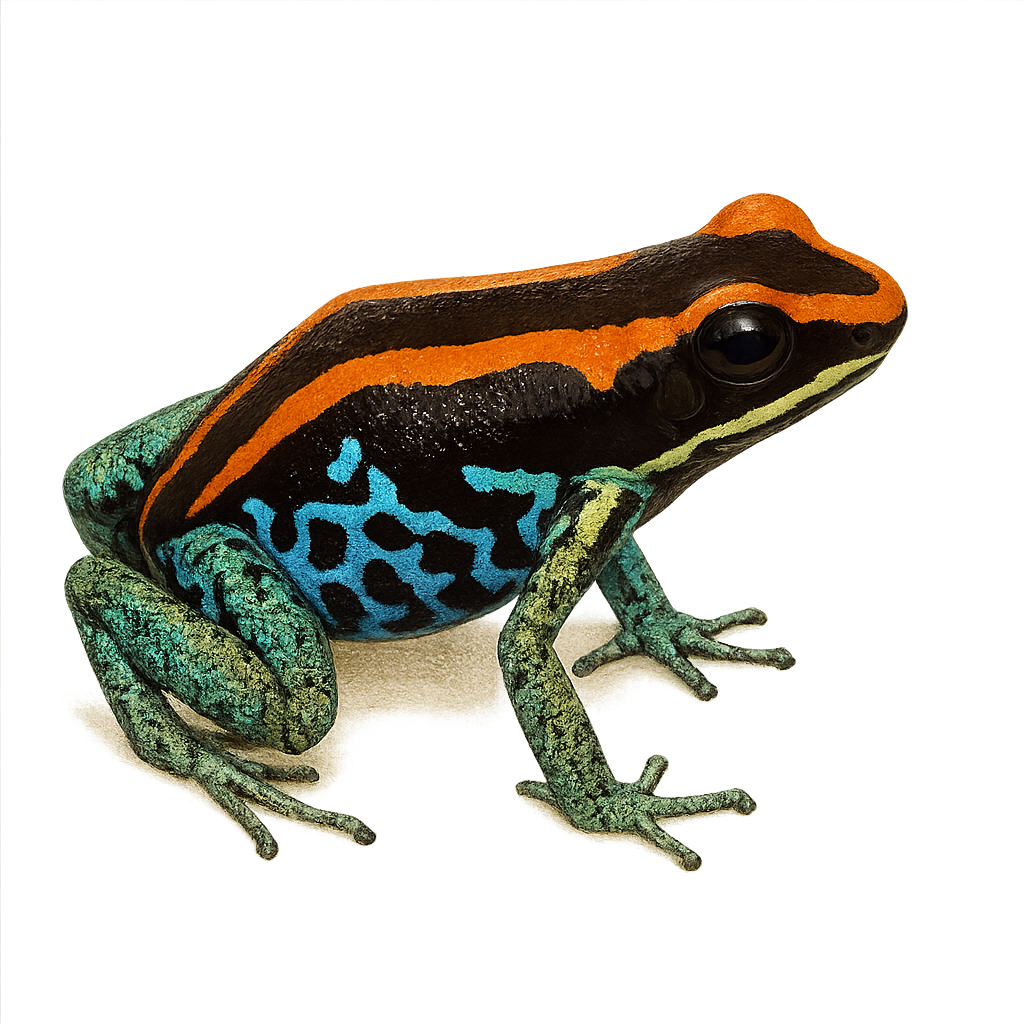The Talamanca Rocket Frog is a small-sized species, typically brownish with darker patterns on its back. It is primarily found in the lowland humid forests of Central America, particularly in Costa Rica and Panama. This species is known for its ability to leap long distances, allowing it to quickly escape predators. It primarily feeds on small insects and other invertebrates. Males are often heard calling near water bodies to attract females. Reproduction occurs in water, where eggs are laid and tadpoles develop.
The Glass Frog is a fascinating species of amphibian, known for its translucent skin that allows its internal organs to be visible. It typically measures between 2 and 3 cm long and is commonly found on leaves hanging above streams in the tropical rainforests of Central and South America. Its transparent skin serves as an excellent camouflage, helping it blend seamlessly into its environment. This frog’s ability to blend with the vegetation, combined with its small size, makes it hard to spot. Its eggs are laid on leaves above water, and the tadpoles fall into the water once they hatch. This species is nocturnal and somewhat shy, preferring to avoid human interaction.
The Ranitomeya cyanovittata, commonly known as the blue-banded poison dart frog, is a small, brightly colored frog native to the humid rainforests of South America. It is particularly notable for its vivid blue bands that contrast with its black body, a pattern that serves to warn predators of its toxicity. Typically measuring between 1.5 and 2 cm, this species is a fascinating example of aposematic mimicry. It primarily feeds on small insects and arthropods, which it actively hunts in the leaf litter. Its skin secretes toxic alkaloids, an effective chemical defense against predators. Although its population is stable, it is threatened by deforestation and habitat destruction.
The Kurtmueller's Frog is an amphibian species belonging to the Ranidae family, primarily found in Mediterranean regions such as Greece and Albania. This medium-sized frog has smooth skin with a coloration ranging from green to brown, often marked with dark spots. It prefers aquatic habitats like ponds, rivers, and marshes. Known for its distinctive call, the Kurtmueller's Frog uses it mainly during the breeding season to attract mates. It feeds primarily on insects and other small invertebrates. Although relatively common within its range, it is sensitive to water pollution and habitat destruction.
The wood frog, Lithobates sylvaticus, is a fascinating species belonging to the Ranidae family. It is easily recognizable by its brownish to reddish coloration and the dark band that runs across its eyes. This frog is particularly remarkable for its ability to survive in cold environments, notably due to its freeze tolerance. In winter, it enters a state of partial freezing, where up to 65% of its body water can turn into ice. It primarily inhabits moist forests, swamps, and wooded areas near ponds and streams. Its breeding period often coincides with the melting of snow, when temperatures begin to warm up.
The Boquete Rocket Frog, scientifically known as Silverstoneia nubicola, is a small arboreal frog species native to the humid tropical forests of Central America. It is particularly noted for its vibrant coloration, ranging from emerald green to brown, with distinctive patterns on its back. This frog is often observed in areas of dense vegetation, where it skillfully camouflages among leaves and branches. It plays a crucial role in the ecosystem as an insect predator, thus contributing to the regulation of invertebrate populations. Although its natural habitat is threatened by deforestation, it is currently classified as a species of least concern by the IUCN.
The Splash-backed Poison Frog, Adelphobates galactonotus, is a small, brightly colored frog native to the humid tropical forests of Brazil. Known for its striking skin, which can range from yellow to bright red, it serves as a warning to potential predators of its toxicity. This species typically measures between 3 and 4 cm in length. It primarily inhabits the forest floor but can also climb low vegetation. Its diet mainly consists of small insects and other invertebrates. Although its population is currently stable, it is threatened by deforestation and habitat loss.
The Silverstoneia flotator, commonly known as the rainforest rocket frog, is a small amphibian species found primarily in the humid rainforests of Central America, particularly in Costa Rica and Panama. It is distinguished by its small size, typically between 1.5 and 2 cm, and its vibrant coloration ranging from brown to green with black patterns. This frog is often observed near streams where it breeds. It is known for its high-pitched, repetitive calls used to attract mates and mark territory. Although relatively abundant in its natural habitat, habitat destruction poses a potential threat.
Leucostethus fraterdanieli is a small, colorful frog native to the humid tropical forests of Colombia. It is distinguished by its smooth skin and vibrant color patterns ranging from green to brown, often speckled with black spots. This species is typically found near water bodies, where it primarily feeds on insects. Despite its small size, it plays a crucial role in the ecosystem by regulating insect populations. Its reproduction is aquatic, with eggs laid in water where tadpoles develop. Deforestation and water pollution threaten its natural habitat, making it a vulnerable species.
The Goliath frog is the largest amphibian in the world, capable of measuring up to 32 cm in length and weighing over 3 kg. Native to the rivers and swamps of Cameroon and Gabon, it primarily feeds on insects, fish, and occasionally small mammals. Its large size and rough green skin make it a formidable predator, but it remains discreet and prefers to stay submerged in water. Although not critically endangered, the Goliath frog faces pressures due to habitat destruction.
The Mantella pulchra is a small, brightly colored frog endemic to Madagascar. It is known for its vivid green and black colors, which serve as a warning to potential predators about its toxicity. It primarily inhabits lowland tropical rainforests. This diurnal species feeds mainly on small insects. Its skin secretes toxic alkaloids, providing an effective defense against predators. The Mantella pulchra is threatened by deforestation and illegal trade, leading to its classification as a vulnerable species by the IUCN. Reproduction typically occurs during the rainy season when conditions are optimal for tadpole development.
The Silverstone's Diminutive Frog, scientifically known as Silverstoneia minutissima, is a tiny frog species endemic to the humid tropical forests of Central America. Notable for its diminutive size, it often measures less than 2 cm in length. Its coloration ranges from brown to green, with distinctive patterns that allow it to blend seamlessly into the leaf litter of the forest floor. This frog is primarily terrestrial and feeds on small insects and other invertebrates, playing a crucial role in regulating insect populations within its ecosystem. Despite its elusive nature, it is vulnerable to habitat disturbances, particularly deforestation and climate change.
The Vietnamese Mossy Frog is a unique amphibian species, easily recognized by its rough skin and green coloration that resembles moss, providing it with perfect camouflage in its natural habitat. This frog lives in the humid forests of Vietnam, particularly in rocky areas and trees. It is primarily nocturnal, spending the day motionless, camouflaged among leaves or moss. When it moves at night, it is capable of climbing vertical surfaces thanks to its sharp claws, making it an excellent climber. Its coloration and skin texture help it blend into its environment and avoid predators.
The Excidobates mysteriosus, commonly known as the Marañón poison frog, is a fascinating species from the Dendrobatidae family. It is endemic to the humid tropical forests of Peru, where it primarily inhabits dense undergrowth and areas near water streams. Its skin is a deep blue with distinctive black patterns, making it easily recognizable. Despite its beauty, it is difficult to observe due to its discreet nature and restricted habitat. This species is diurnal and primarily feeds on small insects. It plays a crucial role in the ecosystem by controlling insect populations. The mysterious frog is currently classified as vulnerable due to the loss of its natural habitat.
The Boana picturata, commonly known as the Imbabura Treefrog, is a species of tree frog found primarily in the humid tropical forests of South America. It is distinguished by its bright colors and unique patterns that allow it to blend effectively into its natural environment. This frog is primarily nocturnal, meaning it is active at night. It mainly feeds on insects and plays a crucial role in controlling insect populations in its habitat. Although its conservation status is not concerning, the destruction of its natural habitat poses a potential threat to its long-term survival.
The Common Frog is a widespread species of frog in Europe, easily recognized by its brown or green skin, often spotted with dark markings. It primarily lives in wetland areas such as marshes, ponds, and riverbanks. This frog is an opportunist, feeding mainly on insects, worms, and small invertebrates that it captures with its quick tongue. The Common Frog is often seen during its movements toward water for breeding, a characteristic behavior in spring. It is active during the day and evening, although its habits are more pronounced during the breeding season.
The Silverstoneia erasmios is a small, colorful frog endemic to the humid tropical forests of Central America. It is characterized by its smooth skin and vibrant patterns ranging from brown to green with hints of yellow. Typically measuring between 2 and 3 cm, it is often found near streams where it breeds. Its discreet call is an indicator of its presence. Although its habitat is threatened by deforestation, it remains relatively abundant in protected areas. This species plays a crucial role in the ecosystem by regulating insect populations.
The American Bullfrog, Lithobates catesbeianus, is a species of frog native to North America. Known for its large size, it can reach up to 20 cm in length and weigh over 500 grams. Its skin is typically green or brown with darker spots, and it has powerful hind legs adapted for jumping and swimming. This frog is often found near stagnant water bodies like ponds, marshes, and lakes. It is famous for its loud, deep call that resembles a bull's bellow, hence its name. An opportunistic feeder, it consumes a variety of insects, small fish, and even small birds and mammals.
The Tomato Frog is a striking amphibian species native to Madagascar, easily recognizable by its bright red color and large skin glands that secrete a toxic mucus when threatened. These frogs grow to about 10 cm and are primarily terrestrial, living in the dry tropical forests and savannas of Madagascar. Their bright coloration serves as a warning signal to predators. They are nocturnal and spend the day hiding under leaves or in burrows to avoid heat and predators. During the breeding season, they gather near water sources where they lay their eggs.
The Alto de Buey Poison Frog is a small, brightly colored frog endemic to the tropical forests of Colombia. Its skin features vivid red and black hues, serving as a natural warning of its toxicity. This species is primarily terrestrial and is often found on the moist forest floor, where it feeds on small insects. It plays a crucial role in the ecosystem by regulating insect populations. Unfortunately, it is threatened by deforestation and habitat loss. Its reproduction is complex, involving parental care where adults transport tadpoles to water bodies.
The Yurimaguas poison frog, Ameerega hahneli, is a small, brightly colored frog species belonging to the Dendrobatidae family. It is primarily found in the humid tropical forests of the Amazon, notably in Peru, Colombia, and Brazil. This frog is known for its vivid colors, which serve as a warning to potential predators of its toxicity. It typically measures between 20 and 25 mm in length. Ameerega hahneli are diurnal and spend most of their time foraging for food, mainly insects. They are also known for their distinctive call, used to attract mates and mark their territory. Although their population is stable, they are threatened by deforestation and habitat loss.
Andinobates abditus is a small, brightly colored frog belonging to the Dendrobatidae family. Native to the humid tropical forests of Ecuador, this species is known for its vivid colors that serve as a warning to potential predators. It typically measures between 1.5 and 2 cm in length. Like many frogs in this family, it possesses potent skin toxins. These frogs are primarily terrestrial and are often found in leaf litter. They are diurnal and primarily feed on small insects. Their reproduction involves parental care, where males carry tadpoles on their backs to water bodies. This species is currently classified as vulnerable due to habitat loss.
Boulenger's Poison Frog is an amphibian species native to the tropical forests of Brazil. It is primarily recognizable by its bright color and distinctive skin patterns, which range from bright yellow to green. These frogs produce a potent venom that protects them from predators. It is primarily terrestrial and lives in humid, wooded areas, often near streams. The Boulenger’s Poison Frog is nocturnal, hiding under leaves or in ditches during the day to avoid the heat of the sun. Its bright color also serves as a warning signal to predators.
Wallace's Flying Frog is a remarkable amphibian species, famous for its ability to glide from tree to tree. This frog, with long and flexible limbs, has wide feet with membranes that allow it to stabilize itself in flight. It primarily lives in the humid tropical forests of Malaysia, Indonesia, and Borneo. It feeds on insects while suspended in the branches of trees. During the breeding season, it moves to ponds or streams to lay its eggs. Wallace's Flying Frog is also nocturnal and uses its flight to escape predators.
Leucostethus argyrogaster is a species of amphibian belonging to the Dendrobatidae family. It is primarily found in the lowland tropical rainforests of South America, particularly in Peru and Ecuador. This frog is distinguished by its silver belly, contrasting with its brown or olive-green back. It typically measures between 2 and 3 cm in length. It is diurnal and spends most of its time foraging for food, mainly insects. Its skin secretes toxins, a common trait among its family members. Although its conservation status is not of concern, it is threatened by deforestation and habitat loss.
The golden mantella is a tiny frog (19–24 mm) with bright orange, toxic skin, living in leaf litter of eastern Madagascar’s rainforests. It feeds on small invertebrates and calls briefly after early wet-season rains to attract mates.
The Common Spadefoot, scientifically known as Pelobates fuscus, is a discreet and fascinating amphibian. It is characterized by its smooth skin and brownish coloration, often speckled with dark spots. This toad has powerful hind legs adapted for digging into the soil, allowing it to quickly burrow when threatened. Primarily nocturnal, it emerges from its burrow to feed on insects and other small invertebrates. Its natural habitat includes sandy areas and wet meadows, providing ideal conditions for reproduction. Although its population is stable, it is sensitive to habitat destruction and water pollution.
The Peru poison frog, or Ameerega petersi, is a vibrant and colorful frog species primarily found in the humid rainforests of the Amazon. It is distinguished by its smooth skin and bright color patterns, often a combination of blue, black, and yellow. These colors serve as a warning to potential predators, as this frog secretes powerful toxins. It is generally small, measuring between 2 and 3 centimeters. Its natural habitat includes dense, humid undergrowth, where it primarily feeds on small insects. The Peters' Poison Frog is diurnal, meaning it is active during the day. Its conservation is crucial due to the increasing deforestation threatening its natural habitat.
Phyllobates aurotaenia, commonly known as the Golden-striped poison frog, is an extremely toxic frog species belonging to the Dendrobatidae family. Native to the humid tropical forests of Colombia, this frog is characterized by its smooth, shiny skin, often black with yellow or green stripes. It secretes a potent toxin through its skin, used by local populations to poison arrows. Measuring about 3 to 4 cm, this species is diurnal and primarily feeds on small insects. Due to deforestation and habitat loss, it is considered vulnerable by the IUCN.
The Golfodulcean Poison Frog, or Phyllobates vittatus, is a tropical frog species known for its toxic skin. Native to the humid forests of Costa Rica, this frog displays striking black and orange stripes, a natural warning of its toxicity. It secretes a potent alkaloid toxin, batrachotoxin, which protects it from predators. Measuring about 3 to 4 cm, it primarily feeds on small insects. The Golfodulcean Poison Frog plays a crucial role in its ecosystem by regulating insect populations. Although its toxicity is formidable, it is harmless to humans if not handled. This species is currently threatened by deforestation and the loss of its natural habitat.


